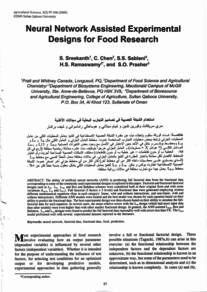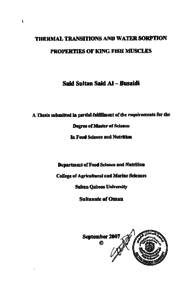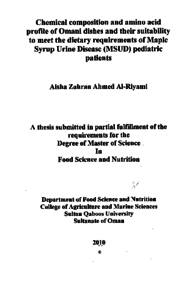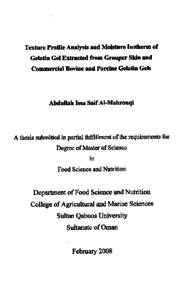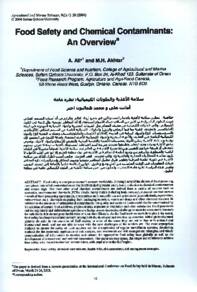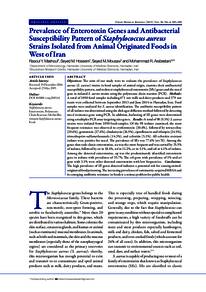وثيقة
Neural network assisted experimental designs for food research.
المساهمون
الناشر
Sultan Qaboos university
ميلادي
2000
اللغة
الأنجليزية
الملخص الإنجليزي
The ability of artificial neural networks (ANN) in predicting full factorial data from the fractional data corresponding to some of the commonly used experimental designs is explored in this paper. Factorial and fractional factorial designs such as L8 L9 L18 and Box and Behnken schemes were considered both in their original form and with some variations (L8+6, L15 and L9+1). Full factorial (3 factors x 5 levels) and fractional data were generated employing sixteen different mathematical equations (four in each category: linear, with and without interactions, and non-linear, with and without interactions). Different ANN models were trained and the best model was chosen for each equation based on their ability to predict the fractional data. The best experimental design was then chosen based on their ability to simulate the full- factorial data for each equation. In several cases, the mean relative errors with the L18 design (which had more input data than other models) were even higher than with other smaller fractional design. In general, the ANN assisted L8+6 , Box and Behnken, L15 and L18 designs were found to predict the full factorial data reasonably well with errors less than 5%. The L8+6 model performed well with several experimental datasets reported in the literature.
المجموعة
ISSN
2410-1079
URL المصدر
zcustom_txt_2
Sreekanth, S., Chen, C., Sablani, S. S., Ramaswamy, H. S., & Prasher, S. O. (2000). Neural network assisted experimental designs for food research. Journal of Agricultural and Marian Sciences, 5 (2), 97-106.
الملخص العربي
هذه الورقة ستقوم بإعطاء نبذه عن مقدرة الشبكة العصبية الاصطناعية في التنبؤ بعامل المعطيات الكلي من عامل المعطيات الجزئي ترتبط ببعض معطيات التجارب المستخدمة عموما. مخطط العامل الجزئي والعامل الكلي مثل L8 و L9 و L18 ومخطط بوكس وبنكن في الأخذ بعين الاعتبار في الأصل مع وجود بعض التغيرات الحسابية 6+8 L و L15 و 1+9 .L العامل الكلي (3 عوامل 5X مستويات) والعامل الجزئي خرجوا بتوظيف ست عشرة معادلة رياضية مختلفة (أربع في كل فئة : الخطية ب أو بدون تقاطعات - غير خطية ب أو بدون تقاطعات) مختلف الشبكات العصبية الصناعية أجريت وتم اختيار المخطط الأفضل لكل معادلة باعتبار المقدرة في التنبؤ بالعامل الجزئي. في حالات مختلفة معدل الخطأ النسبي مع مخطط L18 (الذي يحتوي على معطيات داخله أكثر من أي مخطط آخر) كان أكثر من أي مخطط جزئي آخر أصغر عموما. الشبكة العصبية الاصطناعية اختارت بوكس وبنكن L18 و 15 L للتنبؤ بعامل المعطيات الكلي بشكل معقول بنسبة خطأ تقل عن 5%. مخطط 6+8 L يعمل جيدا مع تجارب مختلفة في حالات روائية مختلفة.
قالب العنصر
مقالات الدوريات

